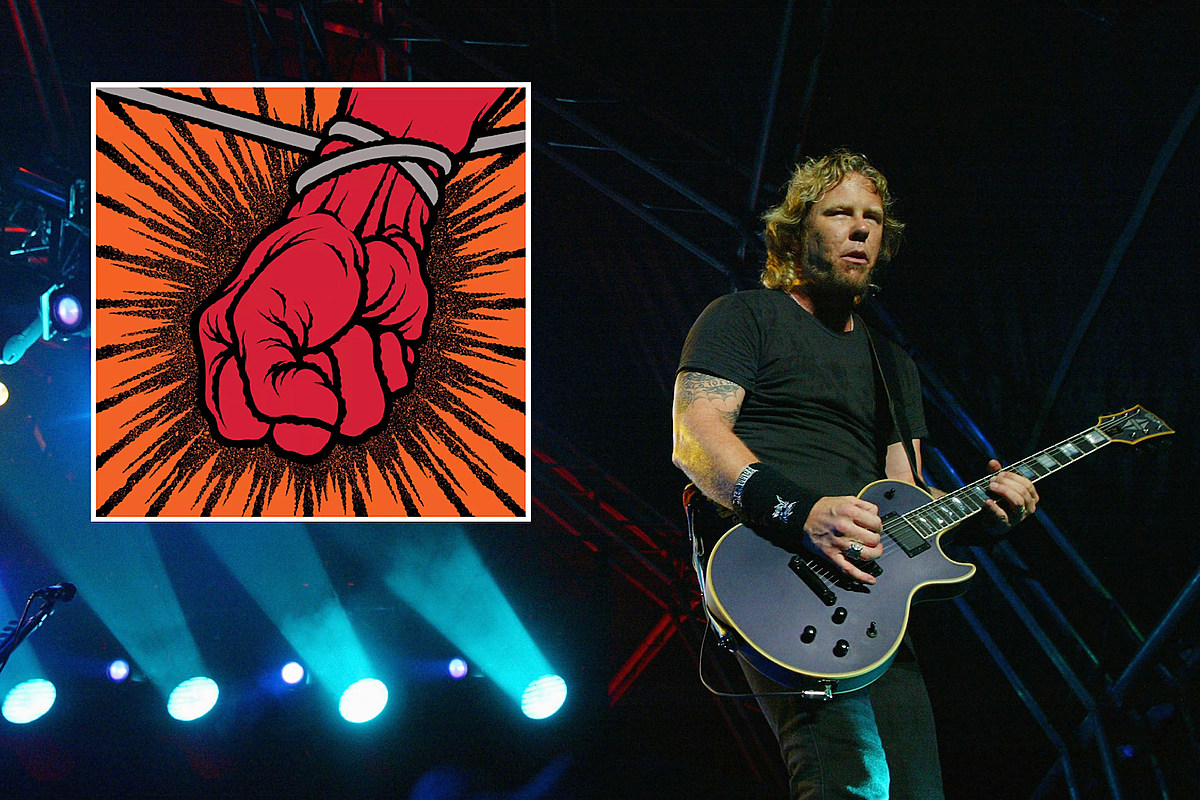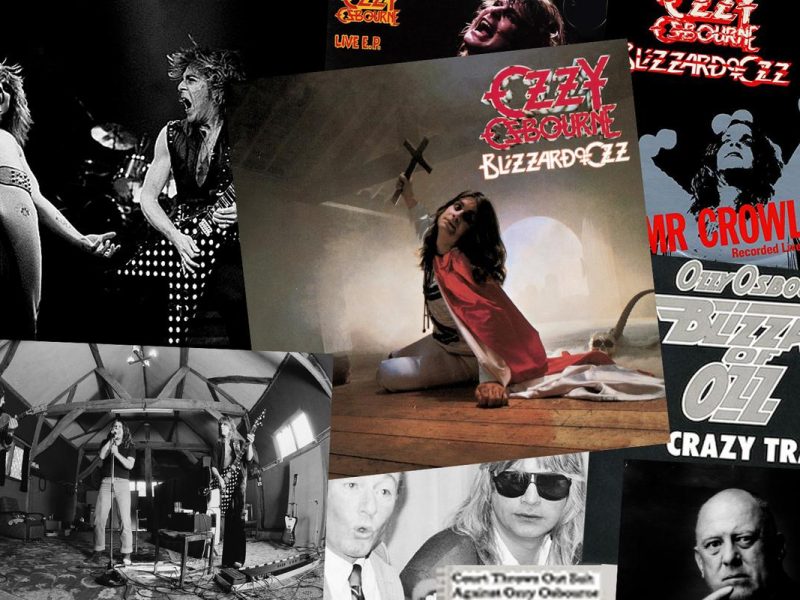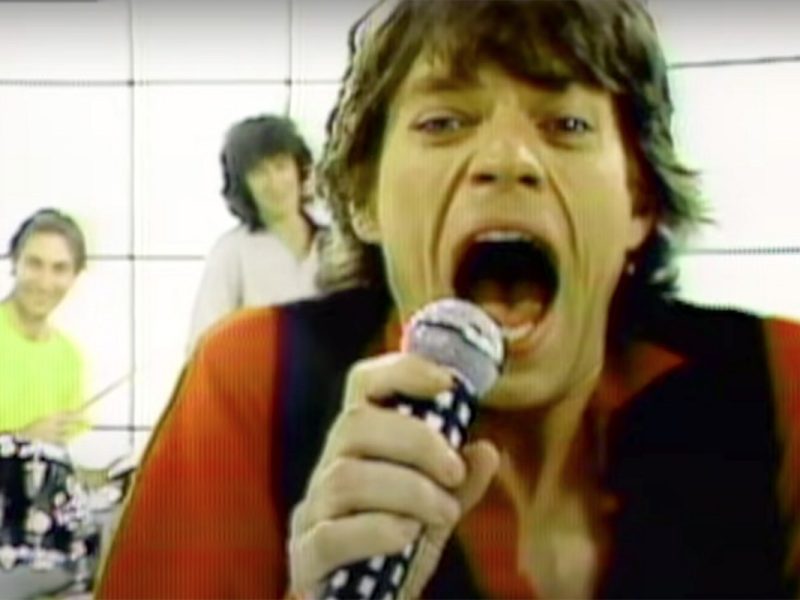Hated by many, defended by some and misunderstood by nearly all, Metallica’s St. Anger has gone down as one of the most contentious albums in metal history.
Intra-band strife was at an all-time high during the making of the LP, with longtime bassist Jason Newsted exiting the group as sessions began, leaving producer Bob Rock to handle four-string duties. James Hetfield and Lars Ulrich were constantly at odds, leaving Kirk Hammett to play hapless mediator. It’s all documented in the accompanying film Some Kind of Monster, one of the most unflinching looks at the inner workings of a world-famous rock band ever made.
This friction spilled over into the music, which is some of the toughest, ugliest and most uncompromising of Metallica’s career. These days, St. Anger is best remembered for Ulrich’s trash can-like snare drum tone and a total lack of guitar solos — anathema to fans of Metallica’s pulverizing thrash origins.
Despite savage reviews from some critics, St. Anger debuted atop the Billboard 200 in June 2003 and eventually went double platinum in the United States. Against all odds, Metallica weathered the storm and emerged with a document of the hell they’d endured. In honor of the album’s tempestuous origins, here are 20 things that went wrong during the making of St. Anger.
Lingering Napster Lawsuit Backlash
Once heralded as heavy metal pioneers and music industry disruptors, Metallica seemed more like cranky establishmentarians in April 2000 when they sued the file-sharing site Napster for disseminating their music online and committing a copyright violation. The band identified more than 335,000 users who shared their music and successfully petitioned Napster to block them from the site. The move made Metallica seem out-of-touch and petty, and it put their stock among fans at an all-time low at the dawn of the millennium.
The Band Entered the Studio Empty-Handed
Instead of meticulously sculpting and rehearsing their songs in advance, Metallica entered the studio with nothing written for St. Anger. “For the first time, I had no idea where that ride was going to take us,” Lars Ulrich told MTV. “The main thing for me was the ride has to be as pure as possible. James wanted everyone to start riffing from nothing and see where it would go — somebody taking the lead and somebody else following it in a very organic and collaborative way.” Judging by the meandering jam sessions and volcanic arguments that erupted in the studio, perhaps the band members would have benefited from a bit more preparation.
Jason Newsted Quit the Band
The biggest wrench in Metallica’s new album plans came in January 2001 when Jason Newsted, their stalwart bassist of 15 years, tendered his resignation. Newsted publicly announced his exit on Jan. 17, citing “private and personal reasons and the physical damage I have done to myself over the years while playing the music that I love.” Absent from his statement were the specifics about his desire to promote his new side project, Echobrain, and James Hetfield’s staunch opposition to the plan. The disagreement curdled Newsted’s already-fraught relationship with his bandmates and hastened his departure. In his place, Bob Rock played bass on St. Anger, and Robert Trujillo later assumed the mantle from Newsted.
A Performance Enhancement Coach Divided the Band
To keep Metallica from flying off the rails, their management company, Q Prime, recruited “performance enhancement coach” Phil Towle to mediate the St. Anger sessions. Towle, a former Chicago gang counselor, was not a trained psychologist or psychiatrist, but he’d worked with the St. Louis Rams during their 1999-2000 season (which culminated in their Super Bowl victory) and tried unsuccessfully to keep Rage Against the Machine from splintering. Not everybody was happy about his presence: Newsted called the use of a therapist “really fucking lame and weak” and quit the band after one session with Towle. “Something that’s really important to note — and this isn’t pointed at anyone — is something I knew long before I met James Hetfield or anyone else,” Newsted told The New York Times. “Certain people are made to be opened up and exposed. Certain people are not. I’ll leave it at that.”
James Hetfield Entered Rehab
A few months after Newsted’s departure, progress on St. Anger ground to a halt once more as Hetfield checked himself into rehab “to undergo treatment for alcoholism and other addictions,” according to a band statement. The move ultimately had a positive effect on Hetfield personally and professionally — he referred to the program as “a nice little cocoon” — but the program put him out of commission for eight months, crushing what little momentum Metallica had generated.
Hetfield and Ulrich’s Relationship Had Reached a Breaking Point
Virtually every aspect of Metallica’s art and career hinges upon the band’s two principals, Hetfield and Ulrich. So with the two of them constantly at each other’s throats, progress on St. Anger naturally happened at a glacial pace. In Some Kind of Monster, the frontman and drummer constantly poke and prod each other about “stock” riffs and “regular” drum beats. Things don’t improve when Hetfield returns from rehab; during a heated band meeting, Ulrich claims Hetfield “controls inadvertently” and tells the singer, “I realize now that I barely knew you before.”
Hetfield Returned With Strict New Work Hours
It wasn’t all smooth sailing once Hetfield returned from rehab. Metallica had to go through an adjustment period with their frontman, particularly regarding his strict new work hours of noon to 4 p.m. Ulrich inevitably bucked against these impositions and listened to tracks outside of this designated work window, which Hetfield interpreted as the band going behind his back. It all came to a head during the aforementioned band meeting where Ulrich told Hetfield, “I just think you’re so fucking self-absorbed,” and famously bellowed “FUUUUCK!” in his bandmate’s face.
Bouncing Between Studios
When the St. Anger sessions commenced in January 2001, Metallica set up shop in a makeshift Army barracks on the Presidio of San Francisco, as their studio wasn’t ready yet. When they reconvened following Hetfield’s rehabilitation program, they moved to their new studio, dubbed “HQ,” in the nearby San Rafael. The switch ultimately served them well, but it was surely a hassle to transport an arsenal of gear from one studio to another, further contributing to the disjointedness of the sessions.
Lars Ulrich Rained on Kirk Hammett’s Tropical Birthday Party
Kirk Hammett embraced surfing during the making of St. Anger, so the Metallica HQ staff commemorated his 40th birthday with a tropical-themed party. The band and crew members all donned Hawaiian shirts, leis and shorts for the occasion — all, that is, except Lars Ulrich, who claimed he never got the memo. “Nobody ever does anything for me,” the drummer seethes to Bob Rock in the parking lot. “I don’t come in one day and there’s a Danish bakery motif or fucking celebrating [Hans Christian] Andersen, children’s poetry motif.” Ulrich sulks throughout the party and later complains to Towle, “Life is an eternal birthday party for somebody else. … Life is a permanent limp dick with an occasional blowjob.”
That Godforsaken Snare Drum Sound
Easily the most divisive element of St. Anger‘s sound was Ulrich’s hollow, ringing snare drum, which has been compared endlessly (and charitably) to the sound of a trash can lid. Rather than some elaborate ploy to mess with listeners’ heads and reinvent the concept of metal drumming, Ulrich was simply taking the path of least resistance. “One day I forgot to turn the snare on because I wasn’t thinking about this stuff,” the drummer told Rhythm magazine. “At the playbacks, I decided I was really liking what I was hearing — it had a different ambience. It sang back to me in a beautiful way. It just felt totally natural.” As Rock explained to Guitar World: “This was a 15-minutes-on-the-drum-sound type of thing. In some case there were only two dynamic mics on the cymbals because I had to run out and play bass, so I didn’t have time to set up other mics. It was just so guerilla. But we embraced that approach right away.”
No Guitar Solos
The other primary point of contention on St. Anger: Kirk Hammett doesn’t get a single opportunity to flex his lead guitar chops. Six-string histrionics had become passe by the early aughts, and Hammett’s bandmates felt his ideas didn’t serve the songs. “We made a promise to ourselves that we’d only keep stuff that had integrity,” Rock told MTV. “Every time we tried to do a solo, either it dated it slightly or took away from what we were trying to accomplish in some other way. I think we wanted all the aggression to come from the band rather than one player.”
‘No Time’ for Good Vocals
Striving for intentionally raw, anguished vocals is one thing; using them because you couldn’t get anything better is another. “There was really no time to get amazing performances out of James,” Rock confessed. “We liked the raw performances. And we didn’t do what everyone does and what I’ve been guilty of for a long time, which is tuning vocals. We just did it, boom and that was it.” An admirable idea in theory, but surely Hetfield could have done a little better than the tuneless bleating in “Invisible Kid.”
Awkward, Juvenile Lyrics
Metallica — particularly Hetfield — exorcised a lot of demons on St. Anger, grappling with addiction, self-doubt, fear, betrayal and unadulterated rage. All potent subject matter, but a newly sober and emotionally raw Hetfield could have used more distance and time to lick his wounds and fully process his feelings before committing them to tape. As it stands, St. Anger is riddled with therapy-speak platitudes, cliche slogans and downright nonsensical catchphrases. Case in point: The “chorus” to “Dirty Window” consists solely of the barked words “Projector, rejector, infector, injector, defector, rejector,” while “Frantic” contains the meme-able zinger “My lifestyle determines my deathstyle.”
The Songs Are Too Long
You can spin the contents of St. Anger as positively or negatively as you want, but when it comes down to it, the songs are simply too damn long. Uninspired riffs and boneheaded beats repeat ad nauseam; choruses loop incessantly for seemingly no reason other than to fill space. For all the digital manipulation that took place during postproduction, St. Anger is woefully lacking in brevity. With the help of a mercenary editor, some of these eight-minute slogs could have shone in the four-to-five-minute range.
The Songwriting Was Too Collaborative
Not only did Metallica enter the St. Anger sessions empty-handed, but they also allowed anyone to take a crack at lyrics to keep their momentum. “At the Presidio we talked about things,” Rock told Sound on Sound, “and I said, ‘Well, look, whatever we do, let’s write the lyrics right away, get the ideas down, and from there we can tweak them. Over time you can come up with something else, but at least we’ll have something and you won’t be staring at a blank page.’ So, we went for that, and when James couldn’t come up with something in the first 15 minutes, that developed into everybody coming up with ideas and from there he would be the master editor. It was very stream-of-consciousness, and that held true for most of the tracks.” Again, a noble attempt in theory, but one that resulted in some gobsmackingly bad lyrics. Stay in your lane, guys!
Post-Production Pro Tools Abuse
If the songs on St. Anger sound disjointed, that’s because they are — literally. Many of the songs were born from hourslong jam sessions, after which Rock would sift through the carnage and string together the best bits. “A lot of the songs were done in William Burroughs cut-and-paste fashion,” Rock explained, referencing the author who famously cut up his writing and reassembled the words to create a new text. “Some people use Pro Tools to trick and fool the listener, but we used it more as a creative tool to do something interesting and stretch boundaries. … Technically, you’ll hear cymbals go away and you’ll hear bad edits. We wanted to disregard what everybody assumes records should be and throw out all the rules.”
The Mixing Was Rushed and Unpolished
In an apparent effort to preserve the raw immediacy of the music, Metallica gave Rock roughly three hours to mix each song on St. Anger. “I’d challenged them, so they challenged me,” the producer explained. “As there was great energy when I did the rough mixes, they basically said, ‘Why do we have to sit there for days and nitpick? Why can’t we just do it in three hours?’ So, that’s what we did, and it was very difficult for me. It wasn’t difficult doing it, but it was difficult to let go. However, once I got into it, I realized that there is something to this; doing it here, now and having a feel of immediacy.” Not everybody agreed: PlayLouder‘s William Luff described the album as “a monolithic slab of noise.”
Metallica Was Suffering From an Identity Crisis
Metallica claimed their decision to nix guitar solos and perform with raw, nonstop aggression on St. Anger was a matter of integrity, but in hindsight, it’s obvious the band was influenced by the nu-metal boom of the late ’90s and early ’00s. The album is riddled with turgid, down-tuned riffs and midtempo bashing that would have sounded more at home on a Limp Bizkit or Mudvayne LP. While songs like “Frantic” and the title track are compelling in their own desperate, furious way, the gambit backfires more often than it pays off.
They Took a (Thankfully) Brief Detour Into Hip-Hop
As the rest of Metallica waited for Hetfield to return from rehab, they linked up with producer and rapper Swizz Beatz for his 2002 album Swizz Beatz Presents G.H.E.T.T.O. Stories. The rockers showed Beatz a bunch of material they’d been working on, and he pieced together two separate song ideas to form the song “We Did It Again,” which also featured rapper Ja Rule. It’s a baffling, aggro-rap jock jam that shifts tempos with little rhyme or reason, featuring disembodied vocals from Hetfield and some wah-wah guitar diddles from Hammett. Blessedly, the hip-hop excursion stopped with “We Did It Again,” and Metallica wouldn’t piss off their fans with another genre-hopping odyssey until 2011’s Lulu.
Unprocessed Grief Over Cliff Burton’s Death
The ghost of Cliff Burton has loomed over Metallica ever since the bassist died in a bus accident in 1986 — and before the making of St. Anger, the rest of the band had never learned how to cope with the loss. They channeled their profound grief and rage into substance abuse, grueling tours, the incessant hazing of Jason Newsted and other self-destructive coping mechanisms. It all came to a head during the agonizing St. Anger sessions, spurring the departure of Newsted, Hetfield’s trip to rehab, vicious band infighting and some of the most difficult, anguished music of Metallica’s career. Miraculously, the band triumphed over misery and adversity — and even if St. Anger wasn’t the album Metallica fans wanted, it was the album they had no choice but to make. Burton would have been proud.
Metallica Albums Ranked
There are moments of indecision when compiling this list. After all, we really could have had – for the first time ever – a three-way tie for first.



